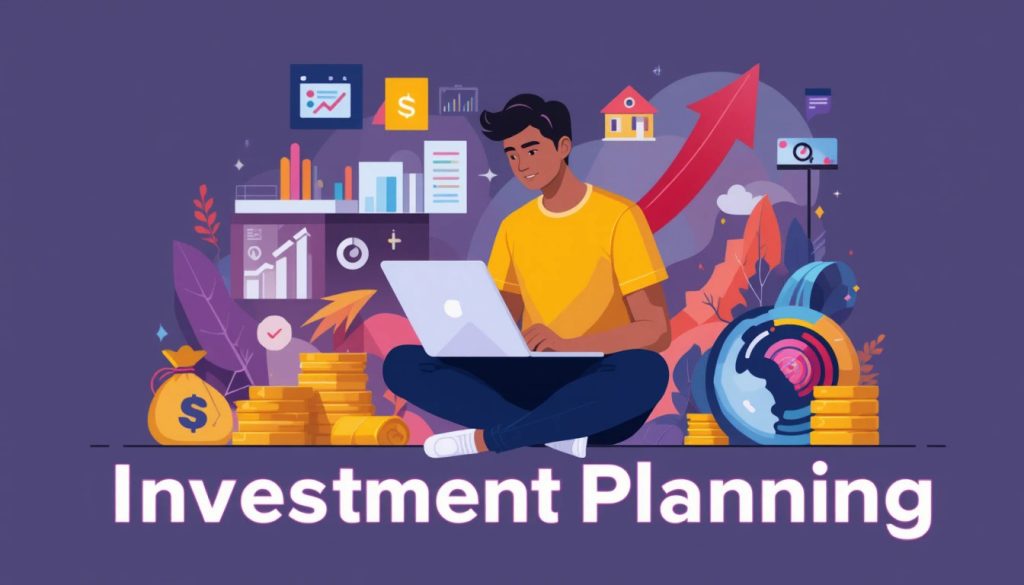Why Students Should Care About Investing
Most students think, “I’ll start investing once I graduate and have a real job.” But here’s the truth: waiting too long could mean missing out on one of life’s most powerful forces—compound interest. Think of it as planting a money tree. The earlier you plant, the bigger it grows. The later you wait, the scraggier your little bonsai becomes.
But here’s the challenge: as a student, money often feels scarce. Between tuition fees, books, housing, and (of course) that one coffee habit that multiplies faster than bacteria in a science lab, starting an investment plan sounds impossible.
This guide by Yelofunding is designed to break that myth. You don’t need thousands of dollars or a finance degree to begin. With the right mindset, tools, and bite-sized steps, you can set the foundation for lifelong financial security—even while juggling schoolwork.
Here’s what you’ll discover:
- Why students are actually perfectly positioned to begin investing.
- Practical money management tips to free up investment capital.
- Beginner investment options tailored for students.
- Step-by-step planning frameworks to maximize returns without taking reckless risks.
Let’s dig in.
Why Should Students Even Think About Investing Early?
Isn’t it better to just save first?
Saving is important—but saving alone won’t build wealth. Inflation quietly eats away at your bank balance like a sneaky midnight roommate raiding your snack stash. Investments, on the other hand, put your money to work, growing over time.
Here’s why investing as a student matters:
- Time Advantage: Starting early gives compounding decades to work.
- Low-pressure phase: Your expenses may rise after graduation—bills, rent, family responsibilities. Investing earlier means training while the “financial weights” are lighter.
- Good habits: Like learning to cook noodles before moving out, setting investment habits now makes you financially self-reliant later.
Example: If you invest $100 per month starting at age 20 with an average 7% annual return, by age 60 you’d have around $240,000. Start at 30, and the total drops massively—to about $115,000. That’s the power of compounding.
Step 1: How Can Students Budget Money for Investing?
What if I feel like I’m already broke?
Budgeting isn’t about denying yourself—it’s about assigning every dollar a smarter job. Even carving out $20–$50 a month can snowball into serious returns.
Practical Budgeting Framework (50/30/20 Rule for Students):
- 50% Needs: Rent, food, books, transport.
- 30% Wants: Coffee, subscriptions, fun nights out.
- 20% Savings + Investments: Even $20 is a start.
Tips to free up extra cash:
- Cook simple meals instead of takeout (yes, ramen counts).
- Use student discounts aggressively (Spotify, Apple, clothing, transport).
- Sell unused textbooks online.
- Freelance or gig jobs for side income (tutoring, design, writing).
Money hack: Automate small transfers to your investment account right after receiving income. If money never hits your “spending” pot, you won’t miss it.
Step 2: What Are the Best Investment Options for Students?
Not every investment requires suit-and-tie Wall Street knowledge. Let’s explore safe and student-friendly options.
1. High-Yield Savings Accounts (HYSAs)
- Great for building an emergency fund.
- Better interest than regular accounts.
- Flexible, liquid, and safe.
2. Exchange-Traded Funds (ETFs)
- Low-cost, diversified, beginner-friendly.
- Think of them as “investment baskets”—instead of buying one stock, you buy a slice of many.
- Ideal for long-term growth.
3. Index Funds
- Similar to ETFs, often less volatile.
- Track market indices like the S&P 500.
- Famous investors swear by them (and they know a thing or two).
4. Micro-Investing Apps
- Round-up features (spend $2.75, invest $0.25).
- Perfect for beginners with tiny budgets.
- Encourage consistency—your “spare change army” fights inflation quietly.
5. Certificates of Deposit (CDs)
- Safer but lower returns.
- Useful for money you’ll need within 1–3 years.
6. Personal Development as an “Investment”
Not to sound like a motivational poster, but investing in skills, courses, and certifications is arguably the highest ROI for students. Unlike stocks, new skills appreciate instantly and follow you into every future job.
Step 3: How Should Students Start an Investment Plan?
Here’s a simple 5-step student-friendly roadmap:
- Set Clear Goals:
Is your aim short-term (study abroad trip, laptop fund) or long-term (retirement, financial independence)? Goals determine risk tolerance. - Build an Emergency Fund First:
Park 1–3 months of basic living expenses in a HYSA. No one wants to sell stocks just to fix a flat tire. - Pick a Platform:
Choose between robo-advisors, brokerage apps, or bank-linked investing accounts. Look for:- Low/no commissions,
- Fractional shares,
- Educational resources.
- Automate Investments:
Auto-debit $20–$50 monthly. Automation = consistency. - Review & Rebalance Annually:
Markets shift. Adjust holdings yearly without micromanaging.
Pro Tip: Don’t fall for “hot stock” hype. Focus on steady, diversified investments rather than chasing the next crypto rocket.
Step 4: What Mistakes Should Students Avoid in Investing?
Common Pitfalls to Dodge:
- Over-trading: Frequent buying/selling racks up fees and stress.
- Zero emergency savings: Losing your laptop while all money is tied up in stocks = bad idea.
- Taking on debt to invest: Credit card APR (20%+) > Average stock return (7%). Debt wins, you lose.
- Chasing trends: Meme stocks and speculative bubbles aren’t reliable.
- Not starting early: Waiting until “someday” = biggest financial regret.
Step 5: How Can Students Build Long-Term Wealth Habits?
Investing isn’t a one-time project—it’s a lifestyle shift.
Wealth-Building Principles for Students:
- Treat saving/investing as a non-negotiable bill.
- Reinvest dividends (don’t cash out small gains).
- Increase contributions as income grows post-graduation.
- Learn continuously—finance podcasts, blogs, short e-courses.
- Surround yourself with financially savvy peers.
Real-Life Example:
- Sam (20) invests $50 monthly. By graduation (age 23), investments = ~$2,000+. By 40, that small start snowballs into tens of thousands—without needing huge new contributions.
FAQs:
1. How much money should a student start investing with?
Even $20–$50 monthly is enough. Consistency is more important than initial size.
2. Should students focus more on saving or investing?
Both are vital. Start with an emergency fund (saving), then invest gradually for long-term growth.
3. Is investing risky for students with low income?
Yes, all investing has risk—but diversified, long-term options (like ETFs/index funds) are safer. Risk decreases with longer timelines.
4. Can students invest without a full-time job?
Absolutely. Side hustles, scholarships, or small part-time work can fuel investing goals. Micro-investing apps make entry easy.
5. What’s the biggest mistake students make with investing?
Waiting too long. Delaying even 5–10 years cuts potential returns drastically.
6. How do taxes affect student investing?
In many cases, students’ taxable income is lower, which may reduce capital gains tax. Always check local tax laws or consult a tax advisor.
Conclusion: The Student Advantage in Investing
The idea of investing as a student might feel intimidating when you’re just scraping together book money. But the truth is, you hold an incredible advantage: time. Even tiny, consistent contributions today can snowball into serious wealth tomorrow.
By budgeting smartly, choosing beginner-friendly options (like ETFs, index funds, or micro-investing apps), and avoiding common pitfalls, you’re not just putting money aside—you’re planting a financial tree that grows stronger every year.
So, start where you are. Invest a little, learn a little, and watch confidence build. Your future self will thank you—not just for the money, but for the freedom it unlocks.
👉 Share this guide with a friend, leave a comment with your first investing goal, or challenge yourself to start with just $20 this week.

